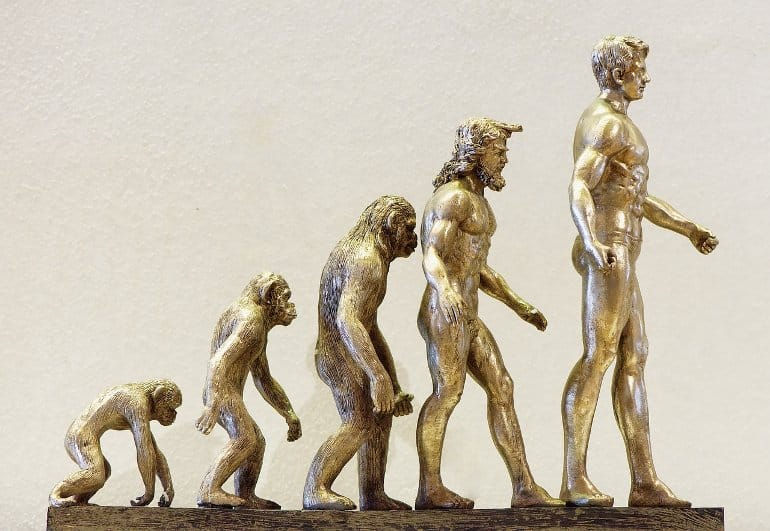Where Did Our Evolutionary Relatives Go?
- Admin
- Sep 21, 2024
- 4 min read

Neanderthals, our closest evolutionary relatives, have inhabited Europe and parts of western Asia for more than 300,000 years before their extinction around 40,000 years ago (L. Slimak et al., 2024). The causes of their extinction are still a topic of scientific debate, with many proposing various factors, including competition with Homo sapiens, climate change, disease transmission, and genetic decline. A synthesis of these ideas suggests that their extinction was likely due to a complex interplay of multiple factors rather than any single cause.
Competition with H. sapiens
One of the popular theories for the extinction of the Neanderthals was that they were outcompeted by incoming H. sapiens populations. H. sapiens were anatomically modern humans who migrated into Europe and the Middle East from Africa around 45,000–50,000 years ago, overlapping with the last populations of Neanderthals. Modern humans had more advanced tools, and superior social networks, and were likely more efficient hunters. This would have given them a significant advantage over Neanderthals in acquiring resources, leading to a gradual displacement of Neanderthal populations (Greenbaum et al., 2019).
Furthermore, research indicates that H. sapiens' larger and more interconnected social groups enabled greater cultural and technological innovation, which may have allowed them to survive better in a challenging and changing environment. The capacity for more sophisticated social structures, including symbolic communication, further strengthened the competitive edge of H. sapiens over Neanderthals (Richards & Trinkaus, 2009). Indeed, recent work is suggestive of the idea that their isolated lifestyle played a role in their extinction (L. Slimak et al., 2024).
Disease Transmission
Another critical factor contributing to Neanderthal extinction could have been disease transmission. When H. sapiens migrated from Africa, they likely brought with them diseases to which Neanderthals had no immunity. This mirrors historical instances, such as the devastating impact of European diseases on Native American populations during European colonization. A 2019 study suggests that even small differences in disease susceptibility between Neanderthals and modern humans could have amplified over time, as H. sapiens developed immunity to Neanderthal diseases while Neanderthals remained vulnerable to H. sapiens' pathogens (Greenbaum et al., 2019; McCoy, 2021).
Climate Change and Environmental Stress
Climatic changes also played a significant role in the Neanderthals' extinction. Neanderthals faced a series of harsh climate fluctuations during their last millennia, which would have severely affected their food sources and habitat. For example, the eruption of the Campi Flegrei supervolcano in Italy around 40,000 years ago triggered a “volcanic winter,” plunging Europe into a cold phase that reduced vegetation and prey availability. Although Neanderthals were highly adaptable, such catastrophic environmental changes could have placed additional stress on already declining populations (Smith & Paabo, 2005).
Some researchers propose that this climate-induced stress may have created conditions in which H. sapiens, with their superior technologies and adaptability, thrived while Neanderthal populations were further strained. However, the Campanian Ignimbrite eruption alone is not considered the sole cause of the Neanderthal extinction; it likely contributed as one of many stressors during their final years (McCoy, 2021).
Genetic Decline and Interbreeding
Low genetic diversity among Neanderthals may have further weakened their ability to adapt to new challenges. Genetic evidence shows that Neanderthals had lower genetic variation compared to modern humans, which could have made them more susceptible to diseases and environmental changes. A small and fragmented population size, compounded by potential inbreeding, would have exacerbated this problem (Smith & Paabo, 2005).
In addition, interbreeding between Neanderthals and H. sapiens might have had a dual effect. While some Neanderthal genes were assimilated into the modern human genome, possibly helping H. sapiens adapt to Eurasian environments, the resulting gene flow may have further diluted Neanderthal populations. Interbreeding was likely limited and asymmetrical, contributing more to the success of H. sapiens than to the survival of Neanderthals (Greenbaum et al., 2019; Stanford University, 2019).
Conclusion
The extinction of Neanderthals is best described as the outcome of numerous, intertwined factors. Competition with H. sapiens, compounded by disease transmission, climate stress, and genetic decline, collectively weakened Neanderthal populations, leading to their eventual extinction. While H. sapiens' arrival in Europe coincided with their disappearance, it was not a case of one species simply replacing the other, but rather an aspect of the multifaceted process of the extinction of Neanderthals. As scientific techniques continue to advance, new discoveries will likely shed further light on the complex events that led to the extinction of our long-lost, closest relatives.
Article prepared by: Chong Yuen Yeng, MBIOS R&D Associate 23/24
If you enjoyed this article, do sign up to become a part of our MBIOS family and receive our monthly newsletter along with many more resources in the link below.
References
Slimak, L., Vimala, T., Seguin-Orlando, A., Metz, L., et al. (2024) Long genetic and social isolation in Neanderthals before their extinction. Cell Genomics. [Online] 4 (9), 100593. Available from: doi:10.1016/j.xgen.2024.100593.
Greenbaum, G., Getz, W. M., Rosenberg, N. A., Feldman, M. W., Hovers, E. & Kolodny, O. (2019) 'Disease transmission and introgression can explain the long-lasting contact zone of modern humans and Neanderthals', Nature Communications, 10(1), p. 12862. doi: 10.1038/s41467-019-12862-7.
McCoy, K. (2021) 'What really killed the Neanderthals? New study offers surprising clues', National Geographic. Available at: https://www.nationalgeographic.com/science/article/what-really-killed-the-neanderthals-new-study-offers-surprising-clues (Accessed: 12 September 2023).
Richards, M. P. & Trinkaus, E. (2009) 'Isotopic evidence for the diets of European Neanderthals and early modern humans', Proceedings of the National Academy of Sciences, 106(38), pp. 16034-16039.
Smith, F. H. & Paabo, S. (2005) 'The Neanderthal Genome Project', Annual Review of Anthropology, 34(1), pp. 11-23.
Stanford University. (2019) 'What caused Neanderthal extinction and were our human ancestors to blame?', SciTech Daily. Available at: https://scitechdaily.com/what-caused-neanderthal-extinction-and-were-our-human-ancestors-to-blame/ (Accessed: 12 September 2023).

Comments